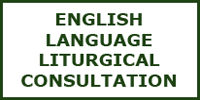
HISTORICAL INTRODUCTION
Beginnings
The ELLC was established in 1985. Its predecessor was the International Consultation on English Texts (ICET) established in 1969 by the International Consultation in English in the Liturgy (ICEL). The program of ICEL, furthering initiatives undertaken by the Consultation on Common Texts (CCT), was limited to preparing common liturgical texts (translated into English) for the eucharist as well as other services of Christian worship. The work was carried out by specialists in the fields of pastoral liturgy, languages, and related disciplines, and culminated in the publication of a revised edition of the booklet Prayers We Have in Common. The common ecumenical agreement found in this milestone document was affirmed in the action of a high number of churches that approved, adopted, or recommended their use.
Foundations of the English Language Liturgical Consultation
In 1983, it was agreed by members of ICEL and CCT to convene a new organization similar in purpose to ICET, but with a more clearly defined membership and even broader goals for ecumenical-liturgical collaboration. The result was the formal organizational meeting of the ELLC held in Boston in conjunction with the regular meeting of the international group Societas Liturgica.
It was agreed that regular membership in ELLC would be accorded to representatives of national or regional liturgical bodies that represented regular ecumenical enterprise. National or regional associations may include churches of the Anglican, Lutheran, Methodist, Reformed (Presbyterian), Roman Catholic, and United/Uniting traditions, but welcome is also extended to Orthodox and other Eastern Churches, and other Christian streams such as the Free Churches.
ICEL as one of the original conveners of both ICET and ELLC, was a full member of ELLC until 2001. It had to withdraw following the publication of the Vatican Instruction, Liturgiam Authenticam which proscribed its involvement in ecumenical bodies. Although entirely Roman Catholic in its own membership and not constitutionally ecumenical, ICEL had participated in ecumenical undertakings from its inception in 1963. It was established by the national Catholic churches throughout the English speaking world and is a joint commission established by twenty six conferences of Catholic Bishops on behalf of those churches, a communion of more than 80 million English speaking Christian believers. Their withdrawal was accepted with great regret, and we look forward to the day when it is once again possible for ICEL to return to membership. In the meantime ELLC has continued to maintain formal and informal contacts with the Holy See through the Pontifical Council for the Promoting of Christian Unity, the Congregation for Divine Worship, in addition to direct exchanges with ICEL itself.
Developments late in the 20th century
The first major project of ELLC, completed in 1990, was the publication of revised common liturgical texts based upon the earlier work of ICET in the booklet Praying Together. Subsequent projects included gathering and studying Eucharistic prayers from all English-speaking jurisdictions, and promotion of the Revised Common Lectionary (1992). In addition, ELLC conducted surveys of member bodies and their individual member churches/associations related to liturgical trends and developments. Such investigations enrich the discussions at the regular meetings, and provide a base for imagining future projects.
In a new century
The most recent achievement of the ELLC was creation of The Reims Statement (see below), formulated at the conclusion of a broad consultation in France, 2011. ELLC plans to meet in open plenary session in August, 2015, at Quebec City, Canada, to reflect ecumenically on core symbolic actions and gestures, on the Ordo, and the shape of the liturgy. (Relevant questions are provided under “Current Discussion” on this site.)
© 2024
All Rights Reserved | English Language Liturgical Consultation
Powered and Maintained by Churchweb Support